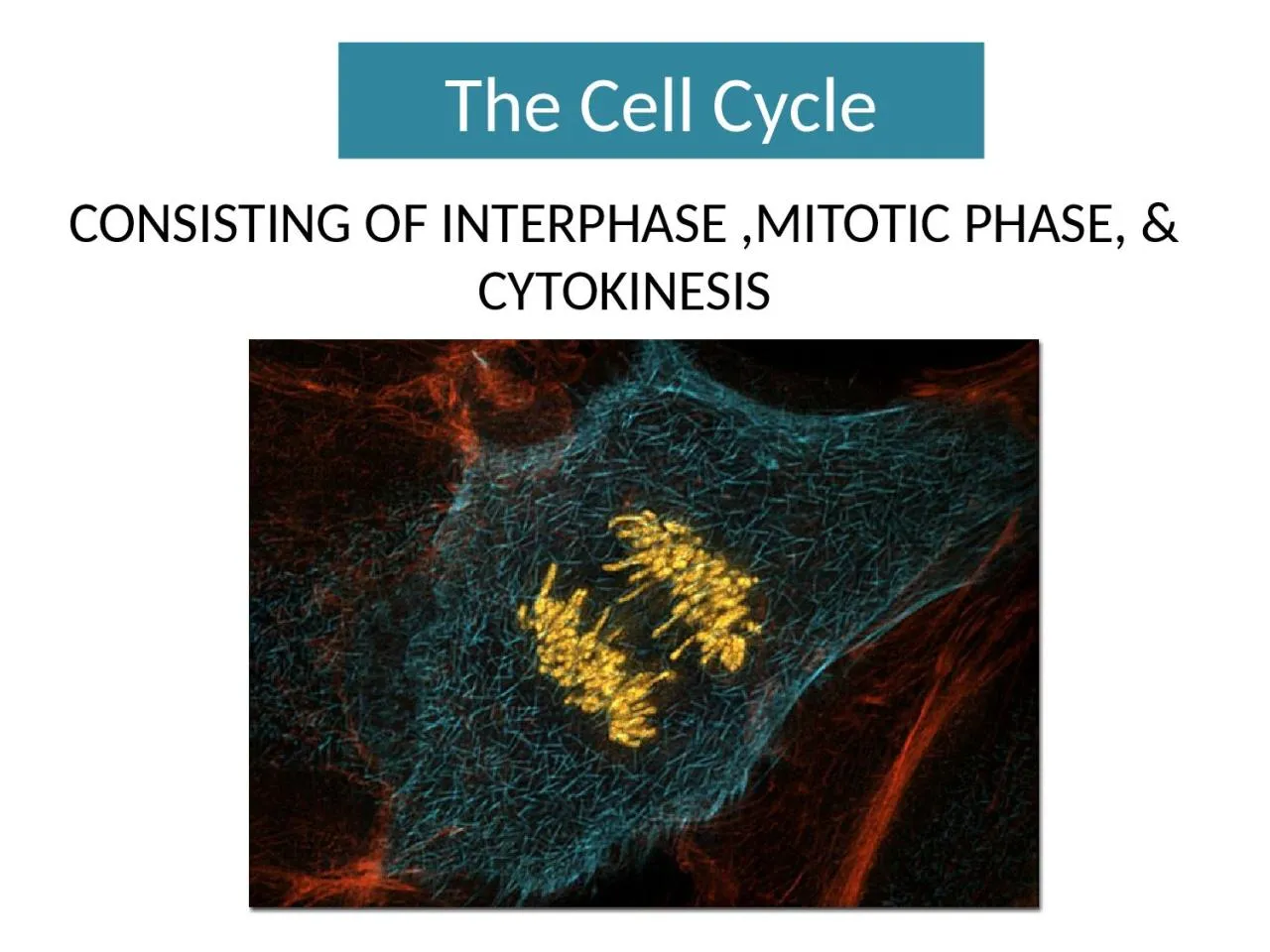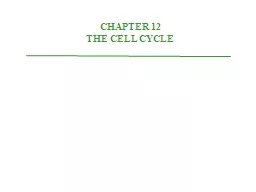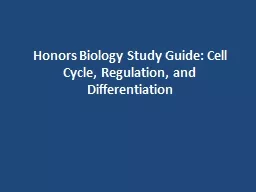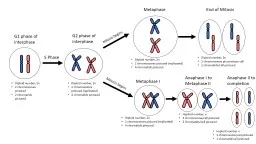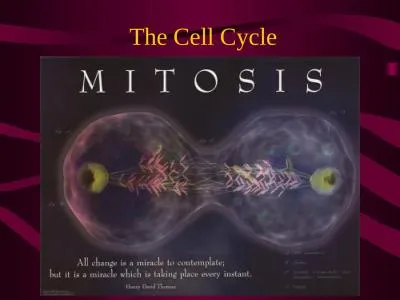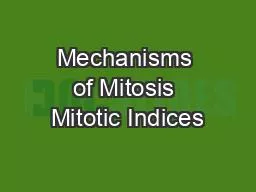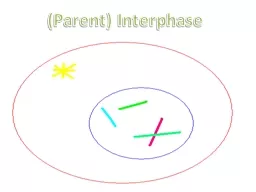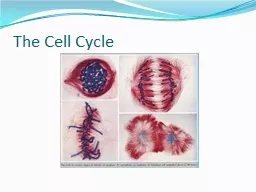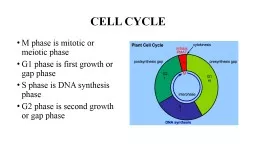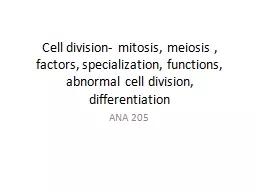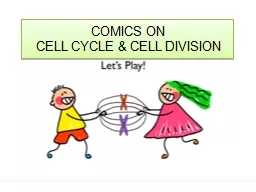PPT-The Cell Cycle CONSISTING OF INTERPHASE ,MITOTIC PHASE, & CYTOKINESIS
Author : leah | Published Date : 2022-06-07
The Mitosis Puzzle Lay blank sheet lengthwise Write Interphase Prophase Metaphase Anaphase amp Telophase across the top of the sheet Cut out the cell diagrams
Presentation Embed Code
Download Presentation
Download Presentation The PPT/PDF document "The Cell Cycle CONSISTING OF INTERPHASE ..." is the property of its rightful owner. Permission is granted to download and print the materials on this website for personal, non-commercial use only, and to display it on your personal computer provided you do not modify the materials and that you retain all copyright notices contained in the materials. By downloading content from our website, you accept the terms of this agreement.
The Cell Cycle CONSISTING OF INTERPHASE ,MITOTIC PHASE, & CYTOKINESIS: Transcript
Download Rules Of Document
"The Cell Cycle CONSISTING OF INTERPHASE ,MITOTIC PHASE, & CYTOKINESIS"The content belongs to its owner. You may download and print it for personal use, without modification, and keep all copyright notices. By downloading, you agree to these terms.
Related Documents

